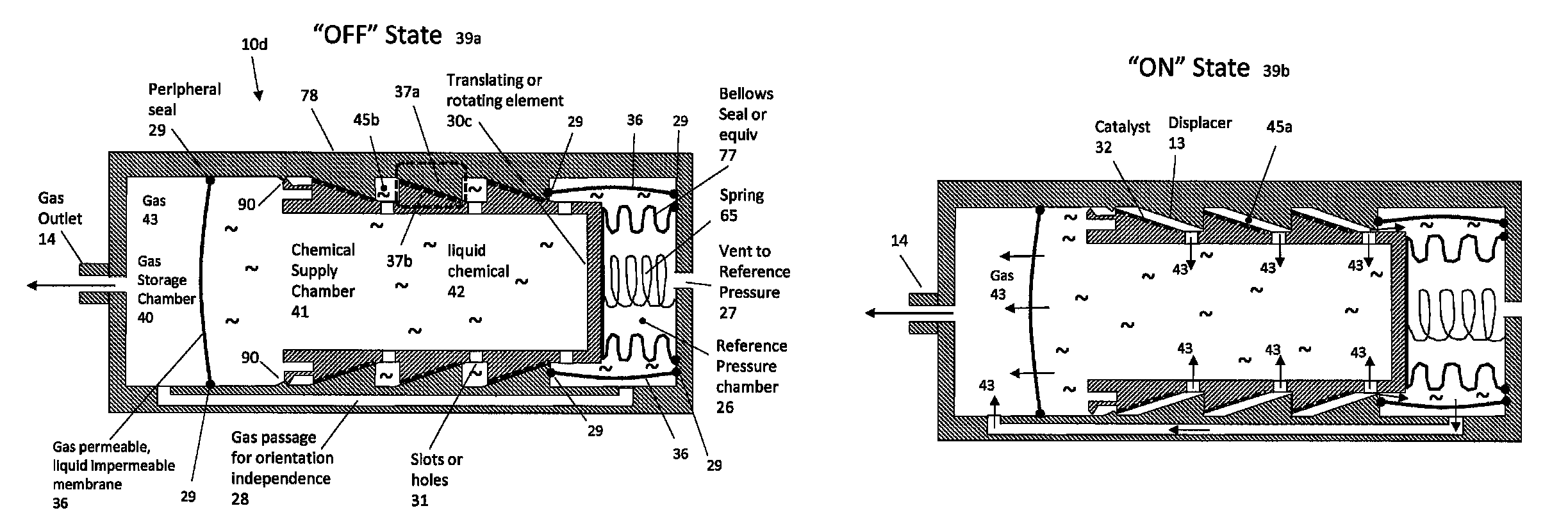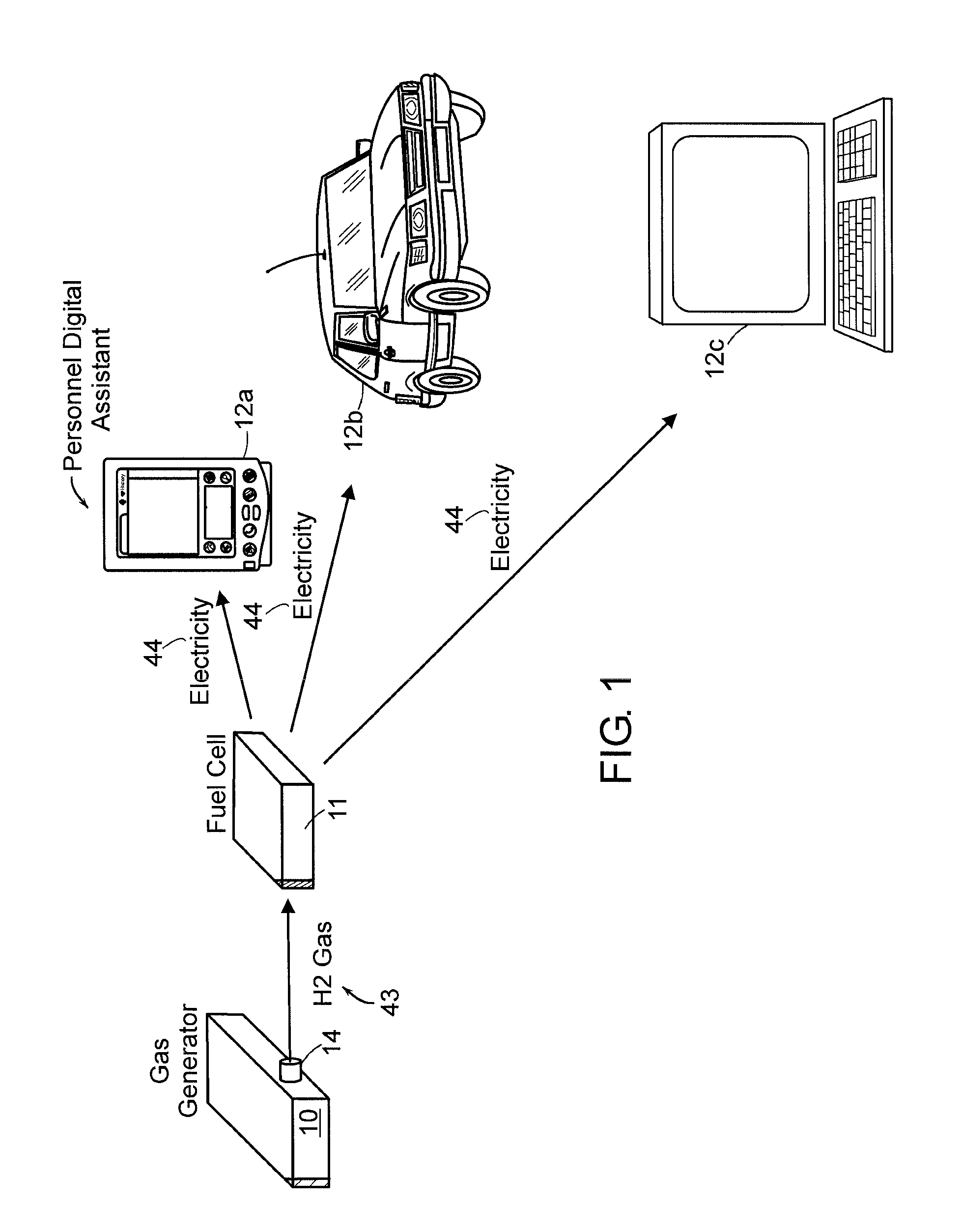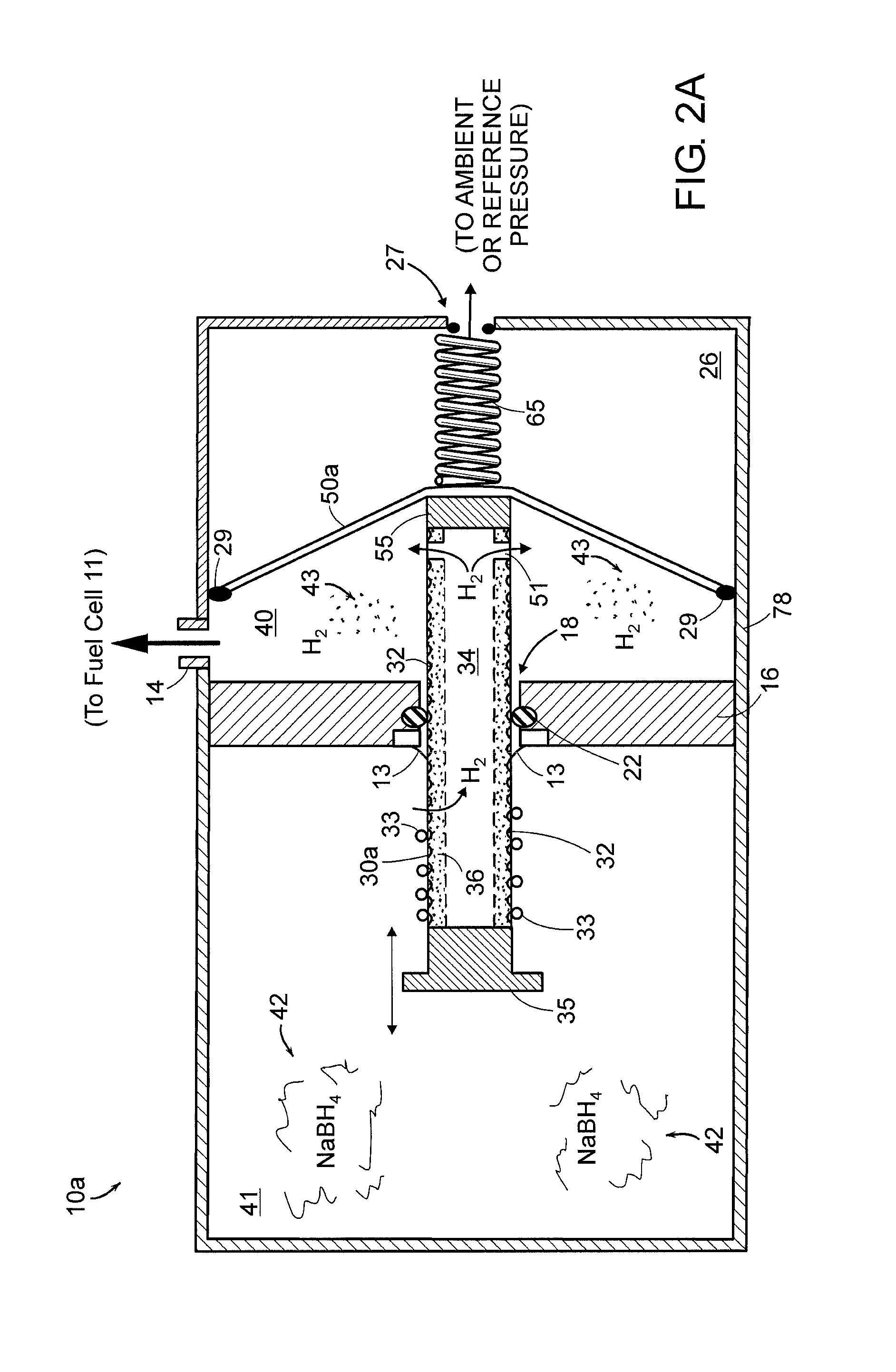Self-regulating gas generator and method
a gas generator and self-regulation technology, applied in the direction of machines/engines, process and machine control, instruments, etc., can solve the problems of power sources having their own drawbacks, and achieve the effect of increasing or decreasing gas production rates and long catalyst li
- Summary
- Abstract
- Description
- Claims
- Application Information
AI Technical Summary
Benefits of technology
Problems solved by technology
Method used
Image
Examples
Embodiment Construction
[0042]A description of preferred embodiments of the invention follows.
[0043]FIG. 1 is a graphical diagram of a fuel cell application in which a gas generator 10 according to the principles of the present invention may be employed. In the fuel cell application, the gas generator 10 generates and delivers hydrogen gas to a fuel cell 11. The fuel cell 11 reacts the hydrogen gas and oxygen to produce electricity 44, as well known in the art. The fuel cell 11 provides the electricity 44 to an electricity-consuming device, such as a personal entertainment device 12a (e.g., MP3 player), remote controlled car 12b, or portable computer 12c. Other fuel cell applications include military electronics, industrial electronics (e.g., printing presses), or consumer electronics (e.g., cellular telephones, Personal Digital Assistants (PDA's), and so forth).
[0044]Generally, a fuel cell consumes hydrogen gas at a rate depending on the power its generating. An example fuel cell is described in U.S. Pat....
PUM
| Property | Measurement | Unit |
|---|---|---|
| gas pressure | aaaaa | aaaaa |
| volume | aaaaa | aaaaa |
| pressure | aaaaa | aaaaa |
Abstract
Description
Claims
Application Information
 Login to View More
Login to View More - R&D
- Intellectual Property
- Life Sciences
- Materials
- Tech Scout
- Unparalleled Data Quality
- Higher Quality Content
- 60% Fewer Hallucinations
Browse by: Latest US Patents, China's latest patents, Technical Efficacy Thesaurus, Application Domain, Technology Topic, Popular Technical Reports.
© 2025 PatSnap. All rights reserved.Legal|Privacy policy|Modern Slavery Act Transparency Statement|Sitemap|About US| Contact US: help@patsnap.com



